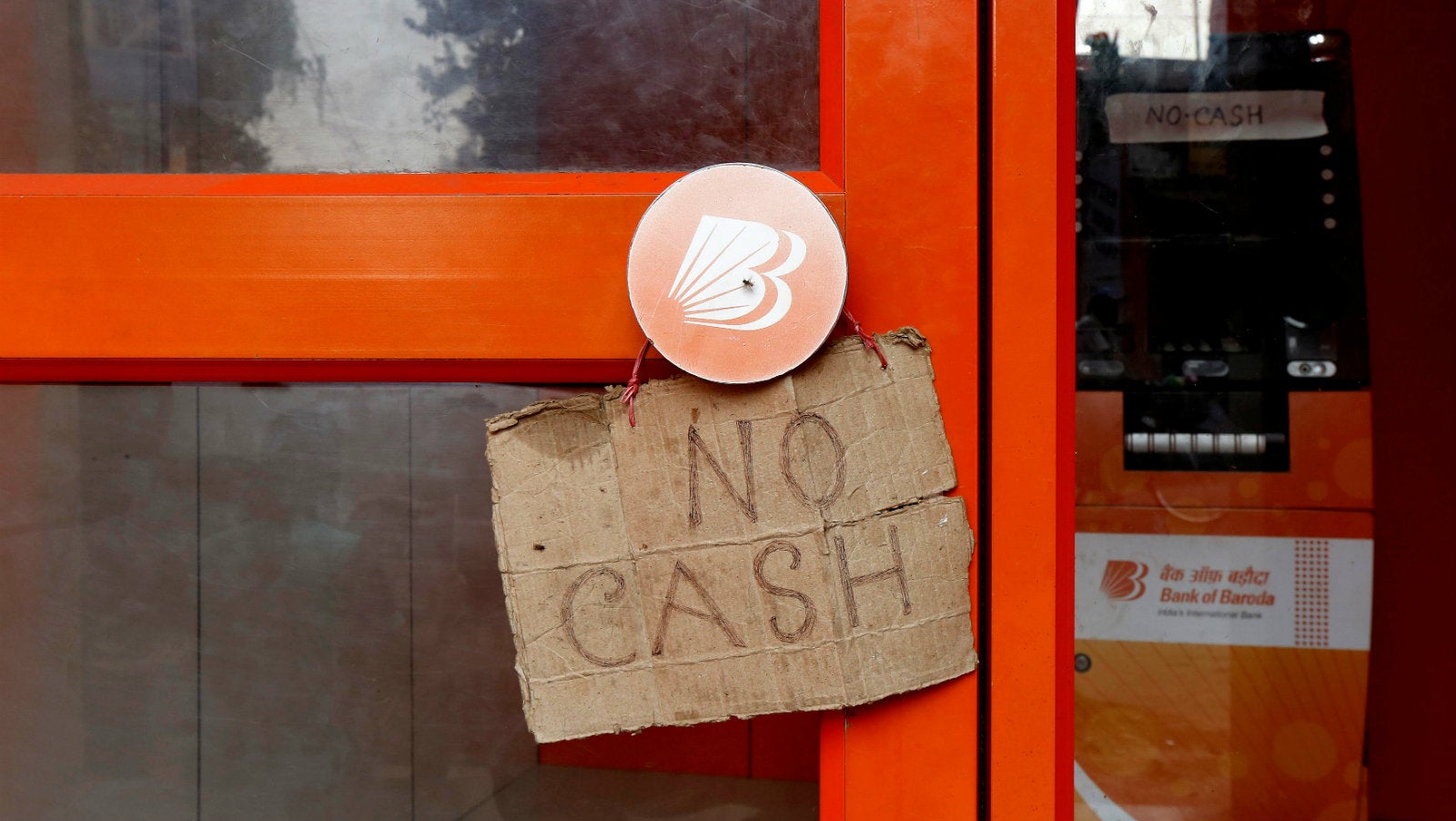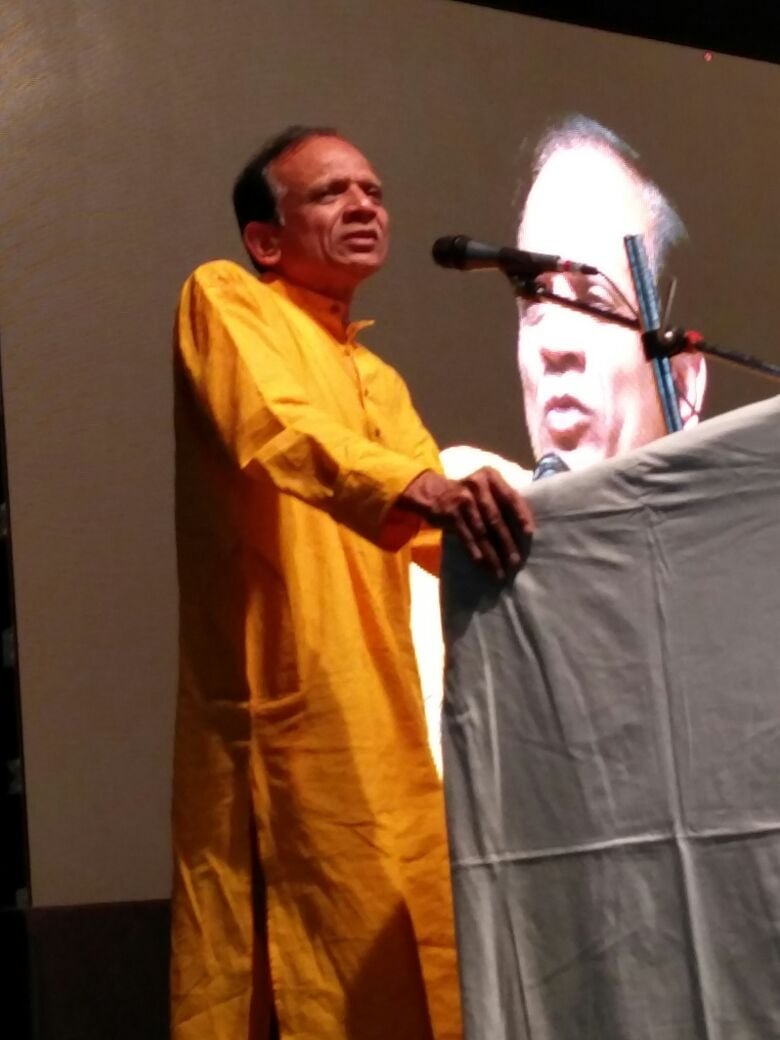The man who inspired India’s demonetisation still believes it was totally worth it
It’s been 10 months since India’s disruptive demonetisation exercise and economists, bankers, and consumers are still trying to understand whether it was really necessary.


It’s been 10 months since India’s disruptive demonetisation exercise and economists, bankers, and consumers are still trying to understand whether it was really necessary.
On Nov. 08, 2016, the Narendra Modi-led government made Rs500 and Rs1,000 notes invalid overnight. These high-value notes accounted for about 86% of the currency in circulation, and their removal sparked a severe cash shortage across the country. In the confusion and chaos that followed, over a 100 lives were lost, with some people being driven to suicide, and 1.5 million jobs disappeared. The growth of India’s economy also took a hit.
However, Anil Bokil, the man who has been credited with giving the government the idea for demonetisation, believes that the exercise was absolutely necessary to improve the health of the economy.
Bokil founded ArthaKranti Pratishthan, a Pune-based think-tank, in 2004, and has been advocating for demonetisation for several years now. He first met Modi in Ahmedabad in 2013, when the latter was announced as the prime ministerial candidate for the Bharatiya Janata Party.
In an interview with Quartz, he explained his rationale for demonetisation.
Edited excerpts:
Why was demonetisation needed?
The problem with cash is that it can be devastating for the economy. Similar to the credit crisis that we had seen in the US in 2008, there was a cash bubble getting formed in India. And it was a very grim problem with serious consequences. The cash economy had led to corruption, black-money hoarding, terrorism funding etc., and therefore it was important to address the issue. Moreover, it is also very difficult to track cash. Therefore, it is important to promote a digital economy to make sure that transactions can be tracked. This cash bubble in India that had been formed was going to burst sometime or the other. So, in order to address all of this, the government had to go for demonetisation.
About 99% of the currency that was demonetised has been deposited into the banks. So how effective do you think was this note-ban in addressing black money or corruption?
Issues like corruption and terrorism are not just one event, these are ongoing battles. The happiness index had collapsed and corruption was on the rise in the country and all this had happened because of non-transparent transactions.
There are big changes that are happening: terrorism funding has reduced because of counterfeit currency going out of the market. Moreover, as more deposits flow into the system, interest rates will go down and the cost of capital will decrease. This can help businesses access cheaper credit and can help them expand. As this happens, even employment generation will improve. So, in order to grow the real economy, there was an absolute need to address the growing cash economy. Just because 99% of the cash has come back into the system, it doesn’t mean that the exercise hasn’t worked. It is just one data point and there is more to it. Moreover, it’s an ongoing process.

There has been a 20% increase in detection of counterfeit notes, But it has come at a huge price, with a higher currency-printing bill and other costs. So was it worth it?
You can’t estimate how many counterfeit notes have come back. This figure is the amount that had come back to the banks, but no one knows the worth of fake currency that was there in the economy and hasn’t come back. I think this is a very childish interpretation by the media and politicians.
But the economic growth of the country has suffered; it has even led to deaths in certain cases.
Yes, a lot of businesses in India were dependent on cash and therefore they were severely affected. But these are the costs that you have to bear for the big makeover. Now, the government should come out with social welfare schemes and help them. Loans should be made available at a low interest rate of 3-4% to help them revive. We are still indulging in a debate on whether it was necessary or not. We need to agree that it was necessary and move on, and demand for more steps to revive the situation.
Was it possible to move to a cash-less and digital economy gradually and not by undertaking an exercise that was so disruptive?
We had suggested a different approach, that first you withdraw the Rs1,000 notes from the system, and then in the following months gradually remove Rs500 and introduce smaller-denomination notes of Rs200. And then in two years, remove Rs200 notes from the system, also then in the following years remove Rs100 as well. About 60-65% of India lives below the global poverty line of less than $2 a day, so we don’t need such high-denomination notes of Rs500 and Rs1,000.
This (demonetisation) wasn’t an option for us, it was mandatory. This medicine has been there for long, the last government (UPA) did not follow it; this government did follow it but gave the wrong dose by withdrawing 86% (of currency in circulation) at one go.
But then why are there even higher denomination notes of Rs2,000?
The government withdrew Rs500 and Rs1,000 notes in just one stroke and that led to a shortfall of 86% of currency in the system. And it wasn’t going to be possible for the economy to absorb this shock. In order to make up for it, the government had no other option but to introduce Rs2,000 notes. This was a stop-gap arrangement. But now the government has reduced its printing, so it will gradually get phased out on its own. It doesn’t need to get banned, but once it goes to the banks it won’t come back and so will get phased out.